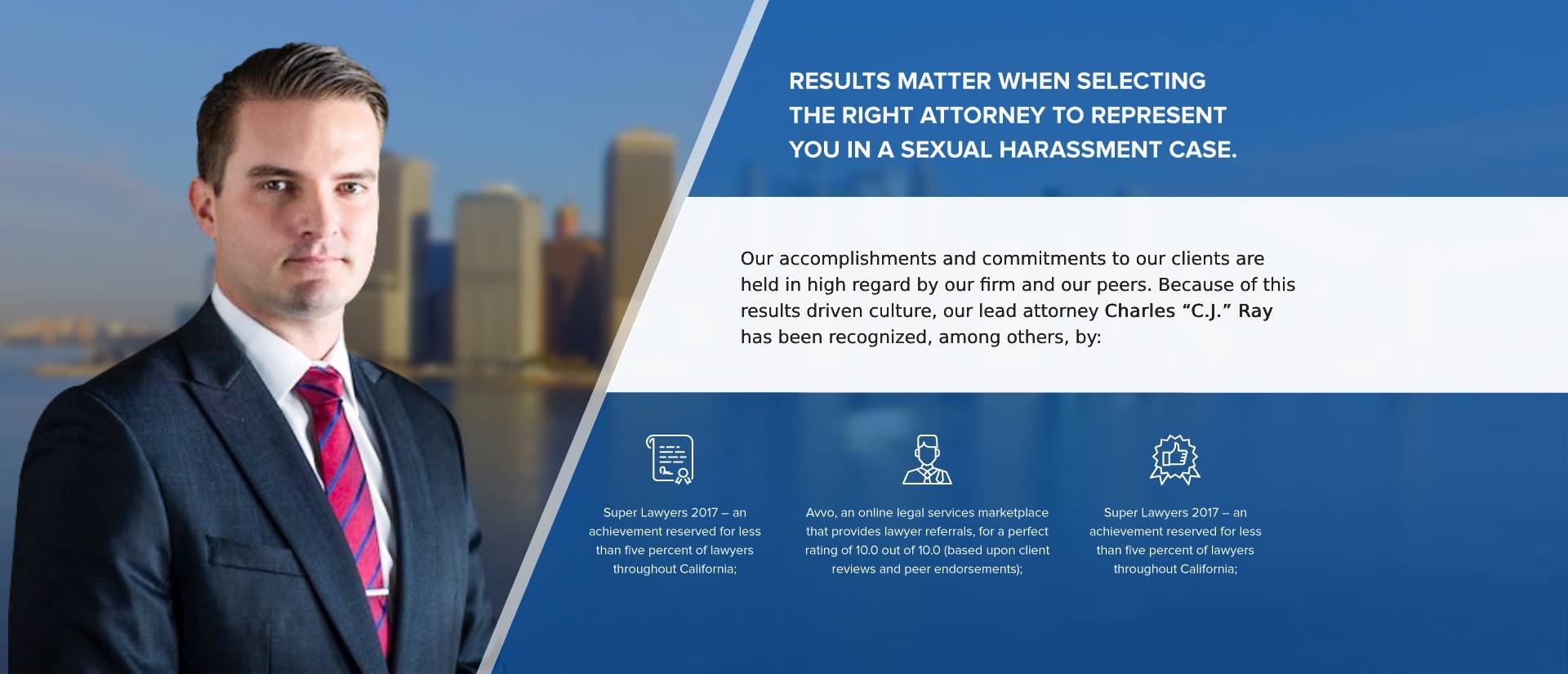Workplace harassment is illegal and creates a toxic environment that can almost completely shut down employees’ ability to do their jobs. Any form of harassment, whether subtle or overt, can cause lasting emotional damage. For many California workers, it is hard to tell when colleagues are crossing the fine line between bad workplace dynamics and unlawful harassment.
At Sexual Harassment Attorney, we help harassed workers, especially those trapped in hostile work environments. If you are being subjected to discriminatory behavior, coercion by superiors or colleagues, or inappropriate comments, contact us for help.
Understanding Hostile Work Environment
A hostile work environment occurs when the behavior in a workplace is so intolerable that one cannot work. Harassment or inappropriate behavior is so severe or pervasive that it alters the conditions of employment and creates an abusive work environment.
An occasional off-color comment may not constitute harassment. However, a persistent pattern of discriminatory remarks, offensive jokes, or physical advances that make you feel uncomfortable can develop a hostile environment. These behaviors do not have to come from a direct supervisor. Any co-worker, client, or anyone you regularly interact with can make the workplace hostile if their actions cross the line.
A workplace free from harassment based on any protected characteristic, such as race, gender, sexual orientation, disability, or religion, is an employee’s right. California law, particularly the Fair Employment and Housing Act (FEHA), clarifies that no one should be harassed while trying to earn a living.
Meaning of Harassment in the Workplace
Unwanted conduct based on a legally protected characteristic that interferes with your work or creates a hostile or offensive working environment is considered harassment. Harassment can be:
-
Verbal remarks
-
Physical actions
-
Visual displays
-
Written communication
For example, making a sexist, racist, or religiously offensive comment about someone is harassment. If this behavior is severe or pervasive enough, it becomes an offense per the California Fair Employment and Housing Act (FEHA). The harasser's intent or perception and how their actions affect the victim do not matter as much as how they affect the victim.
Different Types Of Harassment
There are many forms of workplace harassment. Knowing these helps you determine when your rights are violated. Harassment represents several actions that create an intimidating or oppressive work environment. Different types of harassment can each target a protected characteristic, such as:
-
Race
-
Gender
-
Age
-
Disability
-
Sexual orientation
-
Religion
Sexual harassment is among the most commonly recognized forms of harassment. It includes such things as:
-
Inappropriate comments
-
Unwelcome advances
-
Quid pro quo situations
Harassment also occurs when persistent or severe discriminatory remarks, racial slurs, offensive jokes, demeaning gestures, or other conduct occur.
Another category, hostile work environment harassment, refers to ongoing, repeated behavior that creates a toxic atmosphere. Even the smallest behaviors can, when combined and repeated, become a legally recognized case of harassment.
The harassment happens in person, emails, text messages, or social media posts. The law protects you from any kind of harassment, verbal, physical, visual, or digital. The variations will differ, but the harm to your well-being and career can be equally bad.
Quid Pro Quo Harassment
Quid pro quo Sexual harassment is an abuse of power where someone in a position of power, for example, supervisors, managers, or senior colleagues who can influence decision-makers and executives, demands sexual favors for workplace benefits. The term “quid pro quo” in Latin means “something for something.” This is a transactional abuse in which your job security or advancement is dependent on submission to unwanted sexual advances.
For example, a manager might state that an employee must go on a date to receive a promotion or a raise, or else the manager may not consider demoting or terminating the employee. This abuse of power takes advantage of the fact that the employer controls the terms of employment, and the professional security of the employee is necessary.
Quid pro quo harassment does not always involve direct threats. Even not-so-direct suggestions like "It is in your best interest that you cooperate" could constitute a legal violation.
-
What To Do If You Experience Quid Pro Quo Harassment
If you experience quid pro quo harassment, you must gather evidence to support your claim. This could be an email, text message, meeting note, or a witness statement. Harassment documentation helps you win your case, and you know when it happened.
Under California law, you cannot be retaliated against for filing a complaint or standing up against harassment. Reporting the harassment via your company’s internal complaint procedures is usually the first step.
It does not matter if the harasser had bad intent versus the effect their actions had. Whether the harasser thought that they were 'joking' or 'testing the waters,' it does not matter if they created a hostile or coercive environment for the victim.
-
What an Employer Should Do If You Complain Of Quid Pro Quo Harassment
Under California law, employers must maintain a harassment-free workplace, and failure to address complaints adequately can lead to substantial legal liabilities. Employers should undertake a full and independent investigation when a claim is made. This investigation should include interviews with the victim, the accused, and potential witnesses. To protect all parties involved, the process must remain confidential.
Employers are also obliged to refrain from retaliating against the employee who complained. Retaliation can take many forms, including demotion or transfer or creating a hostile environment that forces employees to resign.
Retaliation provides another avenue of legal action against the employer. If the claims are valid, the offending employee should be subject to necessary disciplinary action, including termination.
Employers should also review their harassment policies and train employees to eliminate harassment in the future. This includes educating all employees, including those in leadership positions, about what constitutes harassment, how colleagues should deal with it, and how to make appropriate complaints lawfully and effectively.
Hostile Work Environment Harassment
A few elements must be present for a workplace to be considered a hostile work environment, including:
-
Harassment must be based on protected characteristics like race, gender, age, religion, national origin, sexual orientation, or disability.
-
For harassment to be considered severe or pervasive, it must affect the conditions of the victim’s employment. That means an isolated incident, unless egregious, would not be deemed to have created a hostile environment. However, even a seemingly minor pattern of discriminatory behavior can violate California law.
-
The conduct must be objectively offensive. Courts weigh the totality of the circumstances.
The California Fair Employment and Housing Act (FEHA) prohibits harassment based on protected characteristics such as:
-
Race
-
Color
-
Religion
-
Sex
-
Gender identity
-
Sexual orientation
-
National origin
-
Ancestry
-
Physical or mental disability
-
Age (over 40)
-
Marital status
These traits can be the basis of a hostile work environment claim if the behavior is severe or pervasive harassment based on these traits.
For example, comments made to an employee daily derogatorily describing their race or religion could count as part of a hostile work environment claim. Such a claim could include even casual jokes or offhand comments, so long as they are part of a pattern of discrimination.
In a hostile work environment case, you must prove that the behavior you face meets specific legal standards to stick.
-
There must be proof that harassment was made based on a protected characteristic.
-
The conduct had to be so severe or pervasive as to alter the conditions of your employment.
-
The offense must be found subjectively and objectively offensive to the victim.
-
Who Can Be Sued For Hostile Work Environment Harassment?
You can sue your employer and the person who harassed you in a hostile work environment. Under California law, employers are responsible for making sure there is no harassment in the workplace. This liability includes harassment by supervisors, managers, coworkers, and third parties (such as vendors or customers).
An employer can be held directly liable for the harassing conduct of a harasser who is a supervisor or manager. The employer may still be liable if the harasser is a coworker or non-supervisory employee. The employer knew or should have known of the harassment and failed to take appropriate steps to stop it. This provides a compelling incentive for employers to treat complaints seriously and act quickly.
-
Supervisors Vs. Non-Supervisors
Hostile work environment claims require a distinction between supervisors and non-supervisors. Employers are more likely to be sued for harassment by a supervisor because supervisors can control an employee’s working conditions.
Almost always, an employer is liable for a hostile work environment if a supervisor is found guilty of creating the environment. Where, however, it is a non-supervisor who is the harasser, the employer may only be liable where the employer had knowledge of the behavior and failed to discharge its duty to take appropriate corrective steps to prevent or correct it.
Proving A Hostile Work Environment In California
To prove a hostile work environment, you must collect evidence to make a claim. Documentation is key. Whatever emails, texts, or written communications showed offensive behavior, save them. Write down the times and dates of everything said or done for the incidents. Witness testimony can be invaluable as well. Other people's statements about or about seeing or doing the same conduct can help you make your claim.
You also have to prove that the harassment was objectively and subjectively offensive. This means that, as the victim, you could not tolerate the behavior, and a reasonable person would agree. In California, courts will examine how often and how severe the conduct is, whether physically threatening, humiliating, or simply offensive.
Potential Damages In A Hostile Work Environment Case
If you win a case for a successful hostile work environment, you can get certain types of pay. Back pay for all wages lost, emotional distress compensation, and, in select situations, punitive damages designed as a penalty for exposing the employer to allowing that kind of harassment to take place. Like California law, recovery of attorney’s fees is available, so victims have fewer deterring legal costs in pursuing justice.
Is A Hostile Work Environment Different From Discrimination?
Hostile work environment harassment and discrimination are, in most cases, two distinct legal concepts, although they often overlap. Specific adverse employment actions, often based on a protected characteristic, such as being passed over for a promotion, demoted, or terminated, are usually the basis of discrimination.
What distinguishes harassment from discrimination is that it occurs in the workplace and aims to create a harassing or hostile environment. Depending on the nature of the conduct, harassment can also be discrimination in many cases and a separate, independent claim in others.
Who Can Be A Harasser?
Harassment can occur in a workplace setting by many people, not just those with authority. Although it is often considered a supervisor or manager issue, it can come from anyone in the workplace. This includes employees, contractors, clients, customers, or visitors to the workplace.
It is not the role of the harasser but that the harasser behaves in a way that impacts the work environment. Actions, not the position or title of the person committing the misconduct, constitute harassment.
California law gives the supervisor or manager a special status of influence that can amplify the results of harassment. In other words, supervisors control the terms of their employment, such as job assignments, promotions, or even the continuation of employment. This means that harassment from a supervisor can also be more harmful, generating both personal and professional conflict. The employer is generally liable directly if your supervisor is harassing you, even if he or she didn't know about the behavior.
It’s also possible for coworkers at the same level to create a hostile environment by making inappropriate remarks, jokes, and actions against you. Although they do not have authority over your employment, they can be liable if their conduct is pervasive or severe. The employer is usually only liable when a coworker is a harasser if the employer knows of the harassment and doesn’t do enough to stop it.
Non-employees such as contractors, customers, or clients can also commit workplace harassment. For example, if a client makes inappropriate advances or repeatedly does offensive things, an employer must protect you from that conduct. California law has a provision that employers have to take reasonable care to prevent non-employee harassment and to create a safe and respectful workplace.
This includes an obligation to report harassment by a non-employee. If you do, your employer must investigate and take corrective action, for example, telling the client what you did or ending the business relationship.
Determining Harassment: True Or False
It can be hard to distinguish between what is harassment in the workplace and what isn’t. Harassment is illegal, the law says, if it meets specific criteria, but the law is also nuanced enough to consider the severity and frequency of the behavior. Knowing these subtleties is important to see if you’re going through harassment or just normal workplace conflict or discomfort.
Behavior that is unwelcome, offensive, severe, or pervasive enough to create a hostile or abusive work environment is considered workplace harassment in California. The conduct need not be continuous or serious to be considered illegal harassment unless it's extreme. The behavior has to be something a reasonable person would find intolerable in a professional setting and has to affect your working conditions.
One persistent myth is that harassment occurs any time sexual misconduct or explicitly discriminatory behavior goes unmentioned. But harassment can take many forms, from offensive jokes to subtle, nonverbal actions such as inappropriate gestures or unwanted physical contact to verbal abuse.
For instance, giving the impression that you will not be able to get along in the workplace with a coworker who is a woman, a person of color, or who is a member of the LGBTQ community can be considered harassment whether or not you engage in a physical confrontation. The law recognizes that such behavior can take its toll on an employee’s emotional well-being and ability to do their job.
Another is where the behavior is coming from. It can come from anyone in the workplace: a supervisor, a coworker, or a customer. However, those who engage in misconduct may have legal consequences and employer liability. An employer is usually liable for the actions of a supervisor, and coworker harassment may require proof that the employer knew of the behavior and failed to act.
But false claims of harassment are rare, too. If an individual accuses someone of harassment, there has to be solid evidence that the behavior did occur. It may be witness testimony, documentation, or other proof supporting the claim.
It may be hard to prove that harassment has taken place without substantiation. But even small patterns of behavior—such as repeated exclusion from meetings or being the target of gossip—can lead to a harassment claim if they connect with a protected characteristic like race, gender, or religion.
Speak to a Sexual Harassment Attorney Near Me
If you face workplace harassment, speak to an experienced attorney to understand your rights and determine the appropriate action. You deserve a safe and respectful work environment, and when those boundaries are crossed, legal help is necessary.
At Sexual Harassment Attorney, we defend workers across California who face hostile work environments or harassment. Whether you are dealing with a hostile supervisor, inappropriate comments from colleagues, or any other behavior that makes your workplace unbearable, our team guides you every step of the way. Contact us at 800-905-1856 to offer personalized advice tailored to your unique situation.



